Last updated: March 22, 2024
Article
Aquatic Invasive Species
- Duration:
- 4 minutes, 51 seconds
This video provides a brief overview of Amistad National Recreation Area's aquatic invasive species program. The park would like to thank the Del Rio High School CTE Media Tech Program students from the 2021-22 academic year for their outstanding work on this video.
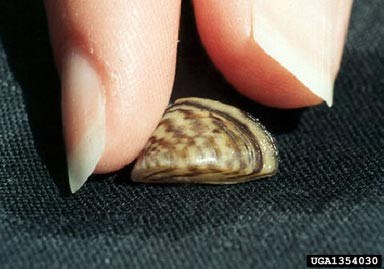
USGS / Amy Benson
In Texas, it is illegal to possess or transport quagga or zebra mussels, dead or alive. To comply with the laws, boaters are required to drain all water from their boat and onboard receptacles before leaving or approaching a waterbody to prevent the transfer of invasive species.
Please clean, drain, and dry your boat to help prevent the spread of these mussels and other aquatic invasive species!
Amistad National Recreation Area has also been implementing various early detection and intervention measures that include sampling and testing, vessel and trailer inspections, and tools boaters can use to reduce risk of contamination.
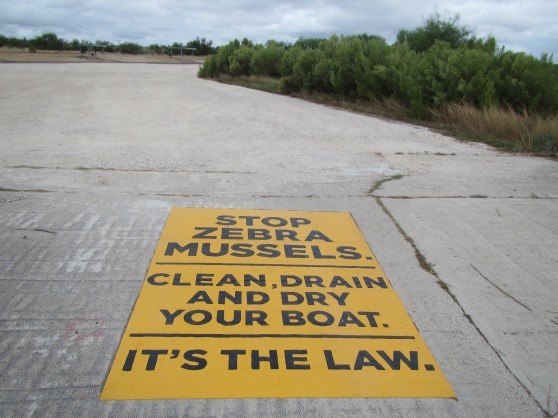
NPS Photo
The United States has been invaded by two species of freshwater mussels: the zebra mussel (Dreissena polymorpha) and the quagga mussel (D. bugensis). Both are freshwater, bivalve mollusks that have a small, triangular shaped shell. Zebra and quagga mussels are Eurasian species that are not native to North America. Since their introduction, conservation-oriented bureaus, such as the National Park Service, have attempted to protect unaffected lakes from invasion and to slow the spread of mussels to new areas. A prevention program specifically targeting zebra and quagga mussels (ZQM) has been in place at Amistad National Recreation Area since 2014, beginning with public outreach and education as the first step in the collective efforts to prevent the introduction of Dreissena mussels.The park has brochures in both English and Spanish that highlight the threat of ZQM. Park staff give presentations to the public, especially at fishing tournament meetings. The park also installed ZQM information stencils and signs in 2015 and 2016.
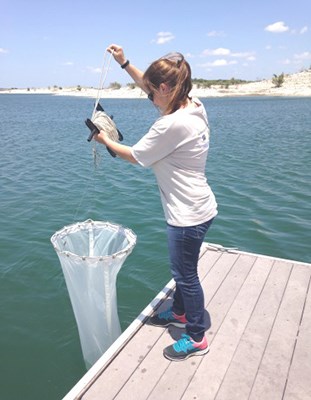
NPS Photo
Early detection is one of the most important steps to initiate containment activities, which will help prevent the spread of aquatic invasive species (AIS) to other water bodies. To help detect AIS, Resource Management staff have settlement samplers, which are inspected monthly at docks and deep water areas adjacent to the boat ramps and Amistad Dam. In addition to the settlement samplers, park staff collect water samples to be tested for zebra and quagga mussel veligers (microscopic larvae). Vertical plankton tows are used to collect samples for analysis using Cross Polarized Light Microscopy (CPL) and/or quantitative Polymerase Chain Reaction (q-PCR) analysis at independent laboratories. Water sampling efforts have been concentrated near high traffic areas, such as marinas, boat launches, and Amistad Dam.
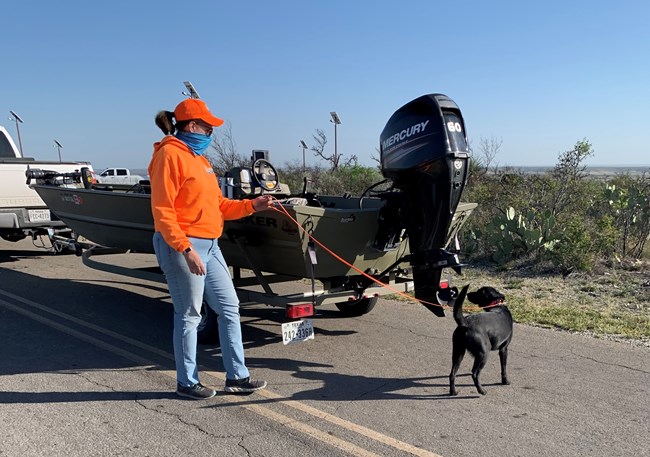
NPS Photo
Another element of early detection and intervention, Amistad National Recreation Area launched a watercraft inspection program in 2015. The goals of the program include inspecting incoming boats for ZQM and other AIS, educating boaters about the risks of invasion, notifying boaters of recent regulations, and gathering information relevant to AIS spread from boaters (i.e. how well they clean their vessel, how often they visit infested/suspect lakes, etc.).
Lake Amistad has 5 major boat ramps that are open to the public (as water levels permit) and selected for inspections – Box Canyon, Southwinds Marina, Diablo East, Black Brush, and Rough Canyon. Inspectors stop incoming boats for a survey and a brief entrance inspection to look for ZQM, hydrilla, and other AIS. If a boat is exceptionally dirty or has visited an infected/suspect lake in the last 30 days without decontamination, it is deemed “high risk” and is given a more rigorous search. Boaters leaving the lake are also surveyed and are reminded to clean, drain, and dry their boats. From the beginning of the program in 2015 until September 2023, the park has inspected 14,269 boats. At times, the park will also use specially trained dogs ("mussel dogs") to inspect for invasive mussels; to this day, the park has completed 6,295 of these inspections.
Despite these valiant efforts, unfortunately in March of 2024, Lake Amistad officially joined the 31 other Texas lakes previously classified as "infested" with zebra mussels by TPWD. This means that these water bodies each have an established, reproducing zebra mussel population. As of March 2021, 24 Texas lakes had been classified as infested. One and a half years later, 7 Texas lakes had been added to the list; another 1.5 years after that, only 1 was added. So, the spread is slowing. It is still critical to have your vessel inspected and to practice "Clean, Drain, and Dry" principles to ensure these pests are not spread to other water bodies and to prevent new AIS from being added to the reservoir.
An invasive mussel status map and full list of Texas lakes can be found on the TPWD website:
https://tpwd.texas.gov/huntwild/wild/species/exotic/zebramusselmap.phtml.
More information about Lake Amistad's status can be found in TPWD's March 20, 2024, news release.
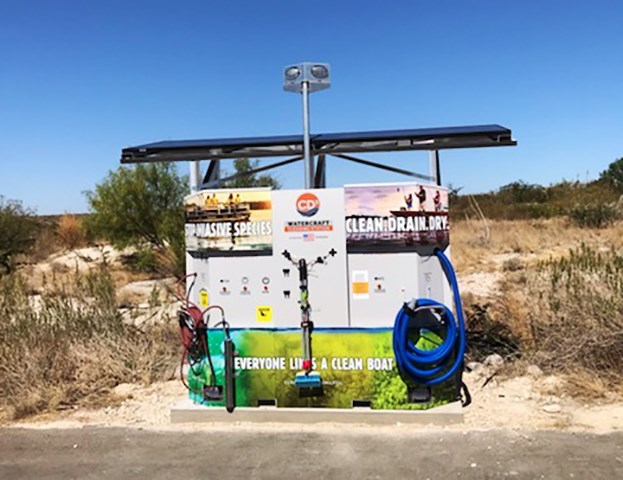
NPS / J Guindin
Providing an additional layer of early intervention, Amistad has installed several free, watercraft cleaning systems that help keep the boater in compliance with Clean, Drain, and Dry principles. These waterless, boater-operated units are located at the Diablo East, Southwinds, Rough Canyon, and Box Canyon boat ramps. Often called "CD3 Units" (for Clean, Drain, Dry, and Dispose -- the last "D" being a reference to bait), these units have the tools necessary to help a boater minimize the risk of contamination from their watercraft and trailer, including a wet-dry vaccuum, blower, grabber, and brush.
We need your help to slow the spread of aquatic invasive species. Please use all the tools available at Amistad National Recreation Area and other bodies of water when boating at these locations.
